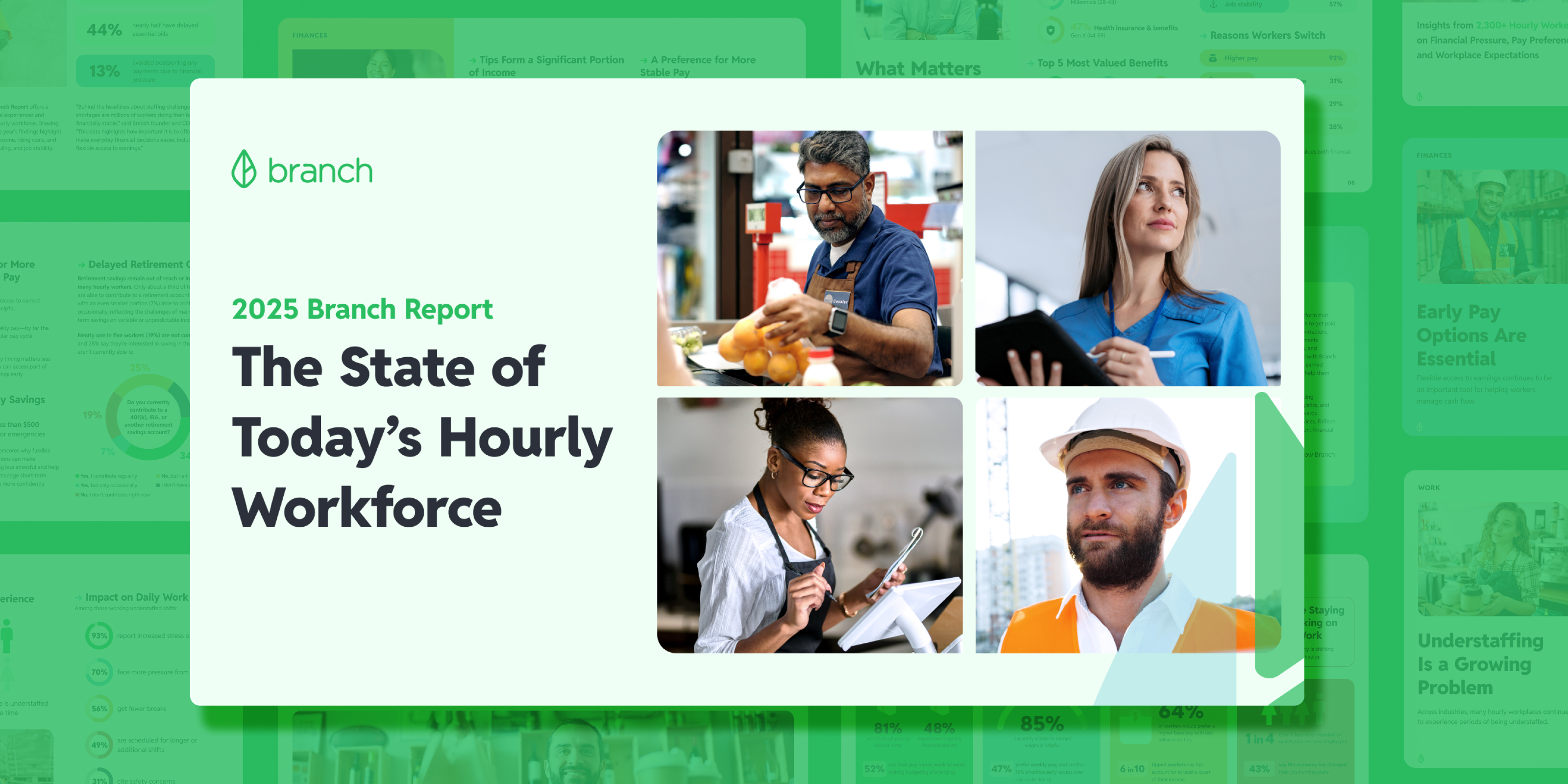
4 Emerging Financial Health Trends in the Workplace
To better understand how companies are incorporating financial wellness into their employee benefits, we sat down with one of our friends at Financial Health Network, a 501c3 nonprofit whose mission is to improve financial health for all. Matt Bahl is the Vice President and Head of Workplace Market Development at Financial Health Network, leading the market insights, strategy, and coordination functions. He specializes in finding ways companies can improve the financial lives of their workers.
We spoke with Bahl to uncover the foremost financial health trends he’s seeing—and what companies can do to plan their strategies for the years ahead.
Branch: What does the concept of financial health encompass?
Matt Bahl: We define financial health as when an individual has access to the systems, resources, and tools needed to build financial resilience and thrive. We use the term “financial health” purposefully. If you go back 50 years, health was defined as “the absence of disease” but we now know health is about that plus factors like diet, exercise, access to affordable care, and more. It’s similar with finances: True financial health is not just an absence of debt, for example, but about all the other components that allow people to thrive.
Branch: What are some of the biggest financial health trends you're seeing in workplaces these days?
MB: There are four big trends that I'm seeing in workplaces right now.

1. Recognizing that income is the most essential building block
Companies are waking up to the fact that they have to pay people a fair wage. It’s not the complete picture, but it’s the foundation. As far as other compensation strategies, cash flow support is huge. So many Americans are living paycheck to paycheck, so offering things like earned wage access and other cash flow solutions is critical.
2. A deeper focus on day-to-day financial support
A lot of early employer-sponsored financial benefits were geared towards retirement planning, education, and coaching— all really important things, but they’re long-term strategies. In the past few years there’s been an accelerated focus on how to support the daily needs of workers, because big financial shocks are inevitable for most people. Short-term liquidity is a really important feature we’re seeing more employers trying to solve, and an employer-sponsored emergency savings program is one example of that.
3. Access to sharing in company performance
Whether it’s through equity grants or other mechanisms, companies are recognizing that building intergenerational wealth and solving some of the disparities we see across demographics can start with giving more workers access to share in the upside of company performance.
4. Going beyond benefits to policies
The policies that companies have are equally as important as the benefits. Paid leave policies, childcare support, parental leave support…all of these things help acknowledge that people’s lives don’t suddenly change when they walk out of the office. They still need support. Recognizing that the whole person has to be cared for and that the workplace can play a central role is critical.
Branch: If a workplace doesn’t have any of these strategies, what would you recommend they start with?
MB: As you’re thinking about your financial health strategy as an employer, you have to start with how far your compensation can take people. That said, income alone won’t solve financial health. That’s where those additional solutions can be so impactful—things like cash flow management and emergency savings plans. One solution alone won’t solve it. You have to think about the full person and the range of needs they have.
Branch: Five years from now, what do you think more companies will wish they had started doing today?
Five years from now, I think companies will wish they had started exploring some of those daily financial support systems for their employees. Things like emergency savings, access to other liquidity solutions, expanding equity ownership, and the ability for employees to share in the success of a business. Earned wage access is picking up steam too—solutions like that will continue to become more expected. And I think the independent worker economy is being re-evaluated as more people enter that space. Companies need to focus on financial benefits for contractors just like they would other workers.
Branch: What other advice do you have for companies who aren’t sure how to provide for their current employees, or simply recruit more talent right now?
Employers need to be bold. This is a time for trial and error and testing some of these emerging solutions in the marketplace. I also think it’s important to actually invest in figuring out what your workforce needs. You can have all the spreadsheets and dashboards you want, but nothing compares with speaking directly to people. Employers need to be more responsive, and that involves a deep investment of listening to workers paired with an equal enthusiasm for trying new things to see what actually moves the needle.
Companies that figure that out are going to position themselves longterm to be winning the war for talent, to be a workplace that people flock to and end up staying. If people feel that their lives are materially improving through the benefits their employer provides, that’s a happy workplace.
Continue reading
Unlock a Happier, More Productive Workforce







